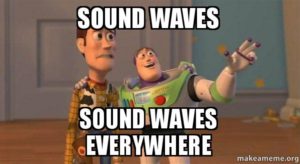Skip to content

“Rhythm and sound cooperate to produce what we call the music of poetry. This music, as we have pointed out, may serve two general functions: it may be enjoyable in itself, or it may reinforce meaning and intensify the communication.
The poet can choose words whose sound in some degree suggests their meaning. In its narrowest sense this is called onomatopoeia. Onomatopoeia, strictly defined, means the use of words that, at least supposedly, sound like what they mean, such as hiss,snap,and bang. Animal noises offer many examples―bow-wow,cock-a-doodle-do,oink―and sometimes poets may even invent words to represent them. The usefulness of onomatopoeia, of course, is strictly limited, because it occurs only where the poet is describing sound, and most poems do not describe sound. But by combining onomatopoeia with other devices that help convey meaning, the poet can achieve subtle or bold emotional effects.
In addition to onomatopoetic words there is another group of words, sometimes called phonetic intensives, whose sound, by a process as yet obscure, to come degree connects with their meaning. An initial fl sound, for instance, is often associated with the idea of moving light, as in flame, flare, flash, flicker, flimmer. An initial gl also frequently accompanies the idea of light, usually unmoving, as in glare, gleam, glint, glow, glisten.
A second and far more important way that the poet can reinforce meaning through sound is to choose sounds and group them so that the effect is smooth and pleasant sounding (euphonious) or rough and harsh sounding (cacophonous). Vowels are generally more pleasing than consonants, for vowels are musical tones, whereas consonants are merely noises.
[The repetition of sounds] will serve several purposes: it will please the ear, it will emphasize the words in which the repetition occurs, and it will give structure to the poem.
The repetition of initial consonant sounds, as in ‘tried and true,’ ‘safe and sound,’ ‘fish or fowl,’ ‘rhyme or reason,’ is alliteration.
The repetition of vowel sounds, as in ‘mad as a hatter,’ ‘time our of mind,’ ‘free and easy,’ ‘slapdash’ is assonance.
The repetition of final consonant sounds, as in ‘first and last,’ ‘odds and ends,’ ‘short and sweet,’ ‘a stroke of luck,’ or Shakespeare’s ‘struts and frets’ is consonance.”



